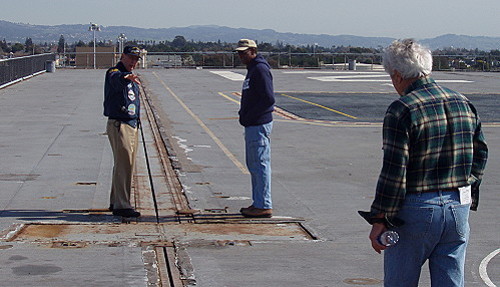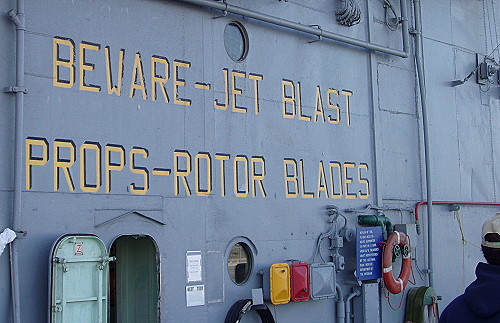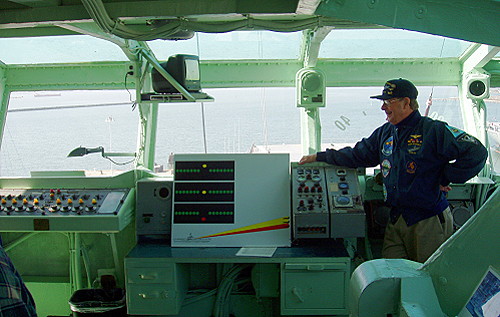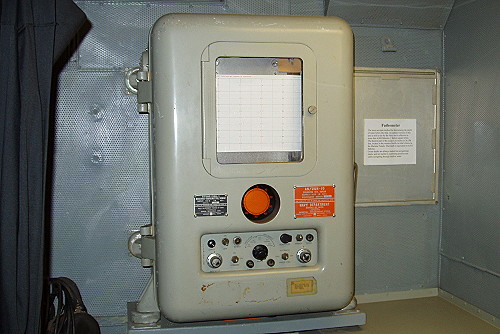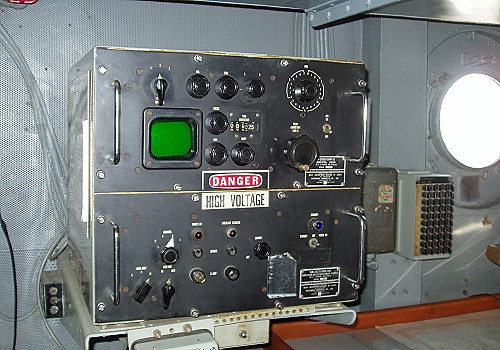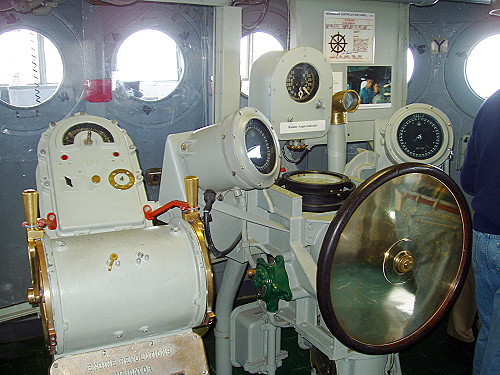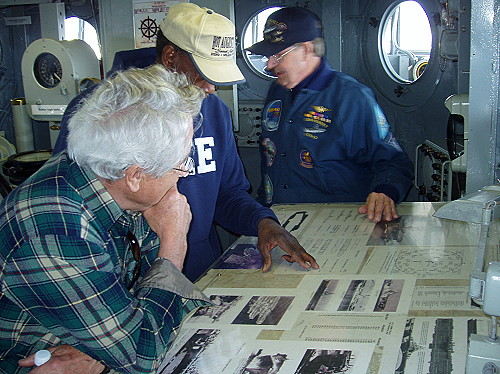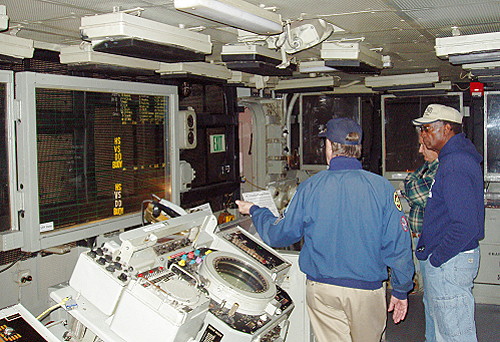USS Hornet Aircraft Carrier Tour
A trip down memory lane — Alameda Point, CA —
|
|
|
|||||||||||||||||||||||||||||
|
|
We arrived at the staging area of the "Topside Tour" which would take us to the flight deck and operations areas. We were on time; however, our trio was the only group that was ready to go. Even though we waited a little longer to give others a chance to take the tour, the three of us were all that showed for the tour, so away we went. Our tour guide, Bill, is a veteran Navy pilot who flew planes from aircraft-carriers. Our route to the flight deck was via the pilot's escalator which wasn't running, so we had to walk up the long stairway. The escalator exit led us to a watertight door, in the superstructure — known as the "island" — that opened to the flight deck. The effect was dramatic to come from low overheads, through close passageways to exit out to the expanse of a huge flight deck. Again we would see a view that included the skyline of San Francisco and the San Francisco-Oakland Bay Bridge as we looked out over the aft end of the flight deck — a really great scene. This was only my second time to be on the flight deck of an aircraft carrier. Our tour-guide directed our attention to the forward part of the flight deck where we saw the outline of the center elevator and what is left of the old port-side catapult. As we heard the story of how a catapult works it sounded to me that the operation of this hydraulic-powered slingshot was a lot more complicated that I imagined. After hearing about the catapult I turned to look back at the superstructure to see familiar looking antennas bristling above. Our tour trio led by our guide took us through the same watertight door that brought us out on the flight deck. Over the door was a very large warning that could be seen from most of the flight deck. The sign said, "BEWARE — JET BLAST PROPS-ROTOR BLADES".  From the watertight door, at flight deck level, our group followed our guide to the flight control area. This is somewhat like an airport control tower where flight-controllers talk to each pilot coming in for a landing. Of course, landing on a carrier is a lot more complicated with the landing strip continuously moving and sometimes pitching as well as rolling. There is very little room for error and if a pilot survives a bad landing he/she gets to review the videos with all the other pilots.  Some of the equipment looked familiar to me; however, the next stop on our tour had several pieces of equipment that I still may have been able to operate. Three familiar items were an UQN-1 depth sounder, an UPN-12 LORAN and a radar scope called a planned position indicator (PPI). We were in the pilot house where the ship is driven, so to speak. The wheel itself was very different from the one on the ship where I served.  The Hornet's wheel is about half the diameter of the wheel on my ship. Another difference was that the Hornet's wheel has a solid piece of clear plastic between the shaft and the outer part that is handled. On my ship the space between the shaft and the outer diameter was stainless-steel spokes that supported a stainless-steel ring used to turn the wheel. It seemed somewhat ironic that my ship being much smaller, than an aircraft carrier, had a wheel twice the size of the carrier wheel.
From the pilot house we proceeded to the combat information Center (CIC) which has more electronic devices that looked very familiar to me. I stood a lot of watches in CIC on my ship as a result of the ship being small with not enough radarmen to fill out a complete watch list. There are a lot more PPIs in the Hornet CIC than on my ship, but all included the same models as the two PPIs in my ship's CIC. Also, one of the Hornet's radars was the same model I was trained on in ET school.
From CIC we continued on our way where we came across a couple of sonobuoys, one was a Russian model while the other was an American listening device. This was something I've only heard about which made it interesting to see a real sonobuoy. Moving along I saw more everyday items that were fun for me to see. Our tour ended back at one end of the hanger deck where we saw an old WWII warbird restored to like-new condition. |
|||||||||||||||||||||||||||
|
Page 2
Disclaimer
|

